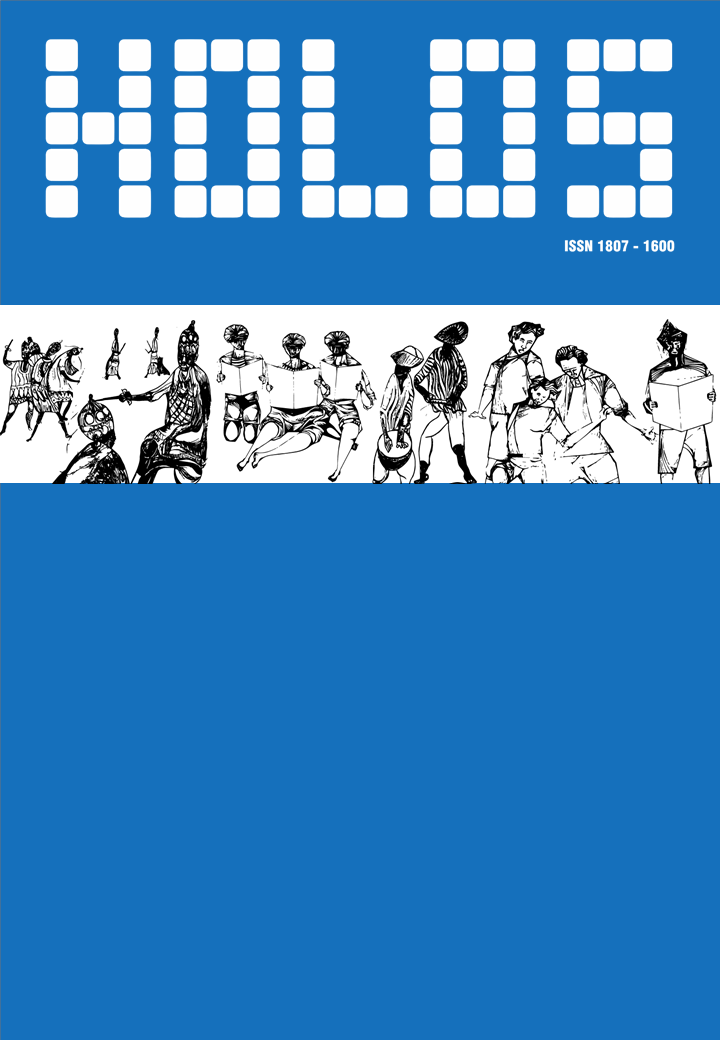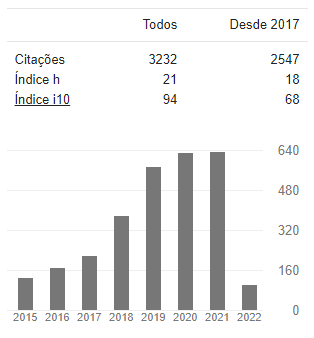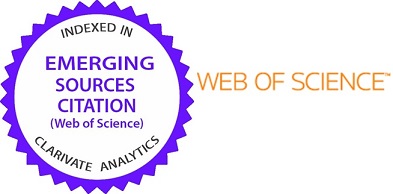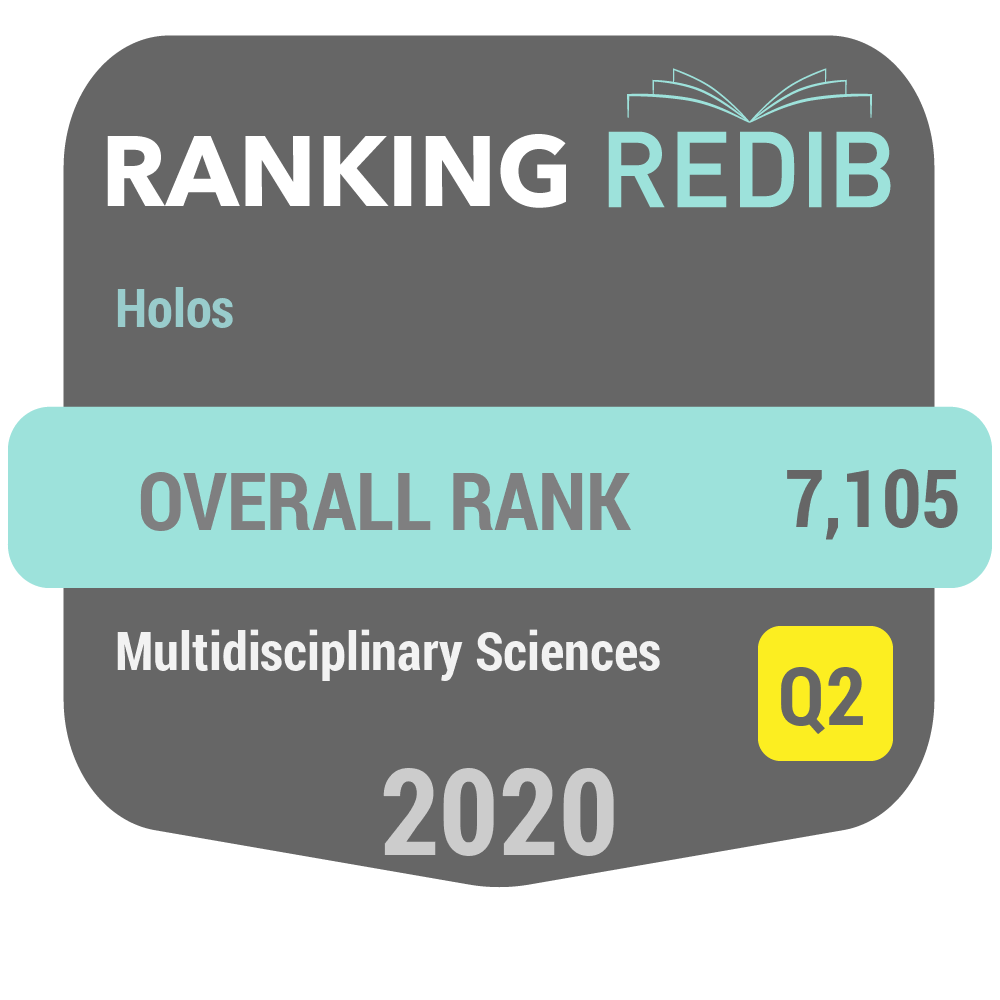Comportamento Mecânico da Liga de Alumínio 2024 Submetida a Diferentes Tempos de Envelhecimento
DOI:
https://doi.org/10.15628/holos.2016.5182Palavras-chave:
liga de alumínio 2024, autorreparo, precipitação dinâmica, comportamento mecânico.Resumo
Ligas de alumínio tratáveis termicamente podem sofrer significativas alterações em suas propriedades mecânicas dependendo do tratamento realizado. Estudos recentes apontam que algumas ligas de alumínio subenvelhecidas podem experimentar o fenômeno do autorreparo ou autocura (self healing). Ou seja, quando solicitados mecanicamente, podem apresentar o fechamento ou a redução na velocidade de crescimento de trincas devido à introdução de tensões compressivas locais associadas à precipitação dinâmica de fases intermetálicas. Isso abre um leque de condições que podem ampliar novos conceitos de projetos de engenharia relacionados aos materiais metálicos principalmente no que se aplica à indústria aeronáutica. O objetivo deste trabalho é avaliar a relação entre as propriedades mecânicas e os tratamentos térmicos de uma liga de alumínio 2024 quando submetida a solubilização (480°C e 2,5h) e envelhecimento artificial (190°C por 1h, 3h, 5h, 8h e 12h), obtendo amostras em condições de subenvelhecimento, máximo de resistência e superenvelhecimento. Esses materiais foram caracterizados mecanicamente em relação ao ensaio de tração uniaxial (ASTM E8/E8M); do ponto de vista estrutural, através das microscopias óptica (MO), eletrônica de varredura (MEV) e microanálise por espectroscopia de energia dispersiva (EDS). Nos resultados da liga 2024 subenvelhecida esse fenômeno de autocura tornou-se palpável, pois verificou-se a ocorrência de envelhecimento dinâmico nas amostras no estado de entrega e subenvelhecidas associado a pequenos serrilhados nas curvas tensão x deformação. Isso traz uma excelente perspectiva para a investigação do fenômeno do autorreparo nas condições de subenvelhecimento, proporcionando o emprego de novos projetos mecânicos.
Downloads
Referências
Afzal, N., Shah, T., & Ahmad, R. (2013). Microstructural Features and Mechanical Properties of Artificially Aged AA2024. Strength of Materials, 45(6), 684-692.
Alexopoulos, N. D., Velonaki, Z., Stergiou, C. I., & Kourkoulis, S. K. (2016). The effect of artificial ageing heat treatments on the corrosion-induced hydrogen embrittlement of 2024 (Al–Cu) aluminium alloy. Corrosion Science, 102, 413-424.
Carvalho, A. L. M. (1999). Comportamento mecânico das ligas de alumínio 7010-T74 e 7050-T7451 de aplicação aeronáutica. (Dissertação Mestrado)–Faculdade de Engenharia Mecânica, Universidade Estadual Paulista Júlio de Mesquita Filho, Guaratinguetá.
de Azevedo Coutinho, T. (1980). Metalografia de não ferrosos: análise e prática. Edgard Blucher.
Fransson, C. (2009). Accelerated aging of aluminum alloys.
Handbook, M. (1979). Properties and selection: nonferrous alloys and pure metals. American Society for Metals, Metals Park, OH.
Hirth, J. (1996). Chapter 20 - dislocations. In: Haasen, R. W. C. (Ed.). Physical Metallurgy (Fourth Edition). Fourth edition. Oxford: North-Holland (pp. 1831 – 1875). ISBN 978-0-444-89875-3. Disponível em: <http://www.sciencedirect.com/science/article/pii/ B9780444898753500259>
Hunsicker, H. Y. (1984). Metallurgy of heat treatment and general principles of precipitation hardening. In Aluminium—Properties and Physical Metallurgy (pp. 152-157). American Society for Metals OH.
Kaçar, R., & Güleryüz, K. (2015). Effect of Quenching Rate and Pre-strain on the Strain Ageing Behaviors of 7075 Aluminum Alloys. Materials Research, 18(2), 328-333.
Koch, G. H., & Kolijn, D. T. (1979). The heat treatment of the commercial aluminum alloy 7075. Journal of Heat Treating, 1(2), 3-14.
Lin, Y. C., Xia, Y. C., Jiang, Y. Q., & Li, L. T. (2012). Precipitation in Al–Cu–Mg alloy during creep exposure. Materials Science and Engineering: A, 556, 796-800.
Lin, Y. C., Xia, Y. C., Jiang, Y. Q., Zhou, H. M., & Li, L. T. (2013). Precipitation hardening of 2024-T3 aluminum alloy during creep aging. Materials Science and Engineering: A, 565, 420-429.
Liu, J., & Kulak, M. (2000). A new paradigm in the design of aluminum alloys for aerospace applications. In Materials Science Forum (Vol. 331, pp. 127-142). Trans Tech Publications.
Lumley, R. (2007). Self healing in aluminium alloys. In Self Healing Materials (pp. 219-254). Springer Netherlands.
Lumley, R. N., Morton, A. J., & Polmear, I. J. (2002). Enhanced creep performance in an Al–Cu–Mg–Ag alloy through underageing. Acta Materialia, 50(14), 3597-3608.
Lumley, R. N., O’Donnell, R. G., Polmear, I. J., & Griffiths, J. R. (2005). Enhanced fatigue resistance by underageing an Al-Cu-Mg-Ag alloy. In Materials Forum (Vol. 29, pp. 256-261).
Lumley, R., & Polmear, I. J. (2007). Advances in self healing of metals. Self healing materials: an alternative approach to, 20, 219-254.
Mukhopadhyay, A. K. (2009). Microstructure and properties of high strength aluminium alloys for structural applications. Transactions of the Indian Institute of Metals, 62(2), 113-122.
Nakai, M., & Eto, T. (2000). New aspect of development of high strength aluminum alloys for aerospace applications. Materials Science and Engineering: A, 285(1), 62-68.
Radutoiu, N., Alexis, J., Lacroix, L., Petit, J. A., Abrudeanu, M., Rizea, V., & Vulpe, S. (2012). Effect of the over-ageing treatment on the mechanical properties of AA2024 aluminum alloy. Revista de chimie (chemistry magazine), 63, pp-1042.
Riemelmoser, F. O., & Pippan, R. (1998). Mechanical reasons for plasticity-induced crack closure under plane strain conditions. Fatigue & fracture of engineering materials & structures, 21(12), 1425-1433.
Ringer, S. P., Hono, K., Polmear, I. J., & Sakurai, T. (1996). Nucleation of precipitates in aged Al Cu Mg (Ag) alloys with high Cu: Mg ratios. Acta Materialia, 44(5), 1883-1898.
Sanders, R. E., Baumann, S. F., & Stumpf, H. C. (1986). Non-heat-treatable aluminum alloys. Aluminum Alloys: Their Physical and Mechanical Properties., 3, 1441-1484.
Totten, G. E., & Mackenzie, D. S. (Eds.). (2003). Handbook of Aluminum: Vol. 1: Physical Metallurgy and Processes (Vol. 1). CRC Press.
Vander Voort, G. F. (1984). Metallography, principles and practice. ASM International.
Wang, S. C., & Starink, M. J. (2013). Precipitates and intermetallic phases in precipitation hardening Al–Cu–Mg–(Li) based alloys. International Materials Reviews.
Warner, T. (2006). Recently-developed aluminium solutions for aerospace applications. In Materials Science Forum (Vol. 519, pp. 1271-1278). Trans Tech Publications.
Zwaag, S. (Ed.). (2008). Self healing materials: an alternative approach to 20 centuries of materials scie









































